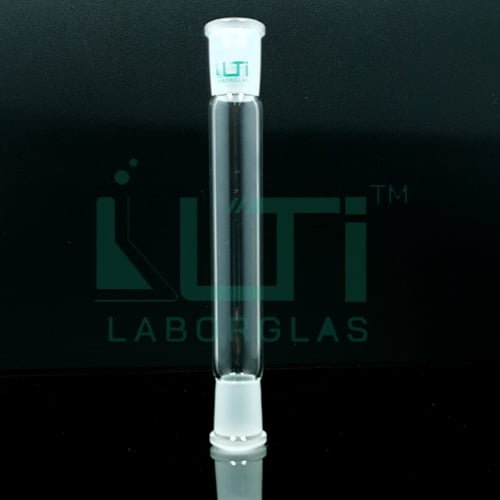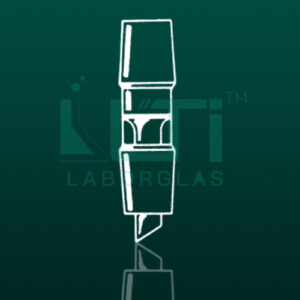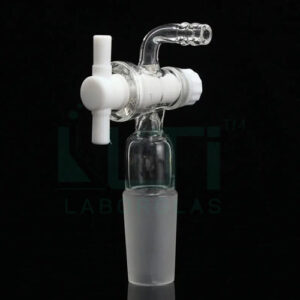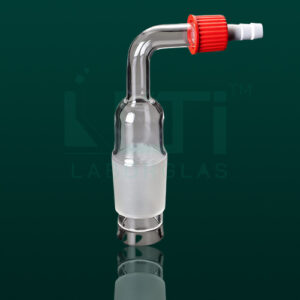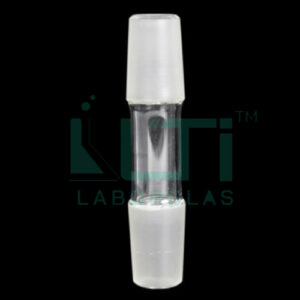Conformity to ISO 383/DIN 12249 Standards
| Part No. | Socket Size | Approx. O.D. Of Tube | Total length (mm) | Pack (qty.) |
| 1220-7S | 7/16 | 11 | 135±2 | 10 |
| 1220-10S | 10/19 | 14 | 135±2 | 10 |
| 1220-14S | 14/23 | 18 | 135±2 | 10 |
| 1220-19S | 19/26 | 22 | 140±2 | 10 |
| 1220-24S | 24/29 | 28 | 170±5 | 10 |
| 1220-29S | 29/32 | 32 | 170±5 | 10 |
| 1220-34S | 34/35 | 38 | 180±5 | 10 |
Here are some potential uses for a double socket joint in a laboratory setting:
- Custom Glassware Assembly: Double socket joints are commonly used to assemble custom glassware setups for specific experiments. Researchers can connect various glass components, such as tubes, condensers, and reaction vessels, to create customized experimental apparatus.
- Reaction Setups: In chemical synthesis or reaction setups, double socket joints can be employed to connect reaction vessels, reflux condensers, and other components. The interchangeability of the joints allows for flexibility in designing reaction systems.
- Distillation Systems: Double socket joints are suitable for assembling distillation setups where components like distillation columns, condensers, and receiving flasks need to be securely connected. This flexibility is beneficial for adapting the distillation system to specific requirements.
- Vacuum Applications: Double socket joints are used in vacuum applications where an airtight seal is essential. This could include setups such as vacuum filtration or other processes that require a reliable vacuum-tight connection.
- Fractionation Columns: Fractionation or distillation columns often require precise connections between various sections. Double socket joints enable the assembly of fractionation columns, allowing researchers to separate components based on their boiling points.
- Research and Development: Laboratories involved in research and development activities may utilize double socket joints for prototyping and testing new equipment or glassware configurations. The ease of assembly and disassembly facilitates experimentation and modification of setups.
- Educational Demonstrations: In educational laboratories, double socket joints can be used for teaching purposes. They provide students with the opportunity to assemble and disassemble glassware setups for various experiments, enhancing their hands-on learning experience.
- Analytical Instrumentation: Some laboratory instruments and analytical setups may utilize double socket joints for connecting different components, ensuring precision and reliability in analytical techniques.
- Fluid Transfer Setups: Double socket joints can be used in setups involving fluid transfer, such as connecting tubing between different vessels or apparatus. This is applicable in situations where controlled fluid flow is required.
- Hydrogenation Reactions: In specialized setups for hydrogenation reactions, double socket joints may be used to connect reaction vessels and other components required for the process.

